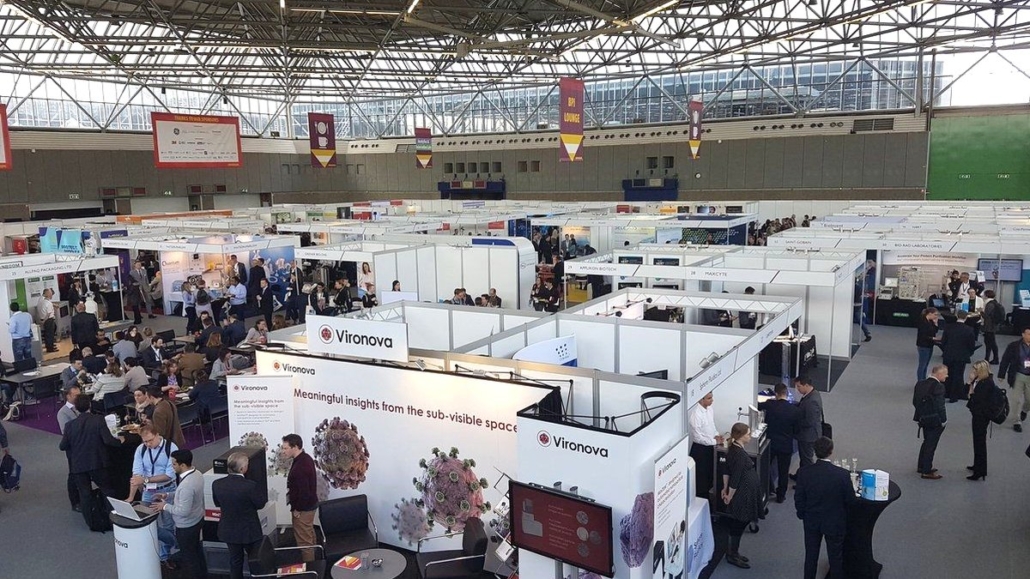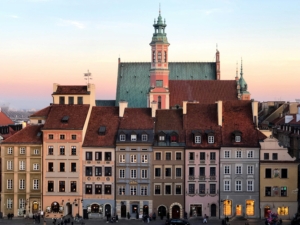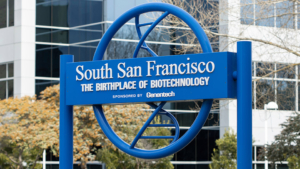
Bright future for biomanufacturers
Progress in process engineering and media optimisation has resulted in significant productivity increases in upstream processing driving transformations at drug developers and CDMOs. At BPI Europe in Amsterdam, companies showed strategies and product launches pinpointing the way towards what could become a new industry paradigm: continuous processing and flexible modular production plants, which both address changed production needs.
Cost pressure, increased productivity of fed-batch processes, and the growing number of biologics tailored to increasingly small subpopulations are encouraging the adoption of smaller scale bioprocesses more than ever. Fifty per cent of the current clinical pipeline can be supplied from 5k or smaller bioreactors, said Jelto Swaving, Director of Business Management at Patheon, at BPI Europe, the annual meeting of the European biomanufacturing community – just one month before Thermo Fisher Scientific announced that it will acquire the world-largest CDMO for US$7.2bn. According to David Radspinner, General Manager, BioPark, GE Healthcare, 80% of [biologic] drugs in development do not fit into the existing infrastructure. Because the share of biologics in the pipelines has already reached 40% of all drugs and is growing further, according to the latest survey of market intelligence company Bioplan Associates, industry majors such as GE Healthcare, Thermo Fisher
Scientific, or emerging CDMOs such as Polpharma have rapidly added modular facilities with single-use equipment to their offerings, plants which can be built very quickly and adapted to rapidly changing production needs. GE Healthcare Life Sciences, one of the exhibitors in Amsterdam, provided a virtual 3D visit to its Flexfactory for the 850 visitors from the sector.
Smaller and flexible facilities
KUBio, our modular facility can reduce build costs up to 50% – time to market is 18 month compared to [the] three years that traditional facilities need to be designed and built. One has just been opened in Wuhan, China, Radspinner told European Biotechnology. A BioPark with four factories, supported by Ireland’s investment agency IDA Ireland, is under construction at Loughbeg, Ringaskiddy, Co. Cork. GE’s €150m investment will fund land, design, and construction, as well as equipping and commissioning the site, while the four modular, single-use units will be bought and operated by independent biopharma companies.
European CDMOs, such as Polpharma, have already capitalised on the trend towards modular facilities. Polpharma has invested €100m to build a 12 × 2000 L modular, single use and fill & finish facility in Warsaw, offering full-range, GMP-compliant services to European biopharma companies.
Products demonstrate potential for further improvement
Both the process productivity of currently 3.5g/l (according to Bioplan Associates) and the reduced production cost are subject to further optimisation.
Exhibitors such as Oxford Genetics suggested that further improvements could be achieved through cell line optimisation, using CRISPR or synthetic biology. Additionally, automated selection solutions that facilitate the screening for the best cell clones were featured at BPI Europe. While companies such as Cytena suggested that single cell printers that spot cell clones in standard microwell plates may be the solution, Cambridge-based Sphere Fluidics globally launched a microfluidics-based cell sorter that encloses cell clones in oil picodroplets stabilised by biocompatible surfactants, which can be screened using optical readouts or assays employing mass spectrometry. The globally unique system generates 100,000 of these mini-test-tubes per minute, with cell viabilities at over 90%, Commercial Manager Klaudyna Johnstone told European Biotechnology. At the show, Biogen’s Eliana Clark doubted that production in CHO cells will allow significant improvements in process productivity in the long term. She announced that Biogen will present the results of the first-ever systematic comparison of alternative eukaryotic production systems to CHO cells in Q3/2017.
Despite huge improvements in cell line development, synthetic media, and upstream processing, downstream processing (DSP) of batches has only shown incremental improvement over the past few years. After the US FDA indicated that it is going to accept continuous bioprocessing solutions, the conservative bioprocessing industry began watching the new solutions presented in Amsterdam like a hawk. Lewa Process Technology presented a hybrid solution for the continuous DSP of monoclonal antibodies that can be applied to close the gap in either the high titre upstream fed-batch or the perfusion processes
The road to continuous DSP
It’s not a question if continuous manufacturing is coming, but a question when it will enter the marketplace, Fleming Carlsen, Sales Director Europe & Asia at Lewa, told European Biotechnogy. At the exhibition, the company pre-launched a GMP-compliant scale up system, dubbed Ecoprime Twin, based on the Contichrom Cube, a twin-column configuration for continuous mAb purification, equipped with protein A columns that allow purification of 1.5 kg of monoclonal antibodies per day. Ecoprime Twin can boost the purification capacity to 31 kg/day, depending on the selected column size.
Pall Life Sciences, part of Danaher, showcased another multi-column system with single flow path dubbed
Cadence BIO SMB for lab scale, which is set to be launched this year. According to the company, the system can reduce depth filtration requirement up to 80%, shows lower buffer consumption, and possesses a much smaller footprint than centrifugation or depth filter solutions.
Chromatography systems like those presented in Amsterdam could replace the serial batch process of loading, washing, eluating, regenerating, and equilibrating, which uses only 70% of the sorbent’s binding capacity by employing multiple smaller columns and second-pass columns that need less sorbent, as it is serially moving through the same process until saturation of the expensive sorbent. Carlsen estimates that it will take the first systems, now applied in R&D, seven to eight years to enter commercial production.
Time for change
Carlsen believes that the risk-averse sector will switch technologies when experiences demonstrate that the new processes lead to significantly higher quality and productivity. According to Bioplan Associates’ President Eric Lander, continuous bioprocessing and associated services was the most requested topic among biomanufacturers and CDMOs in Bioplan’s 2016 sector survey.




 Genentech Corp. / Roche
Genentech Corp. / Roche